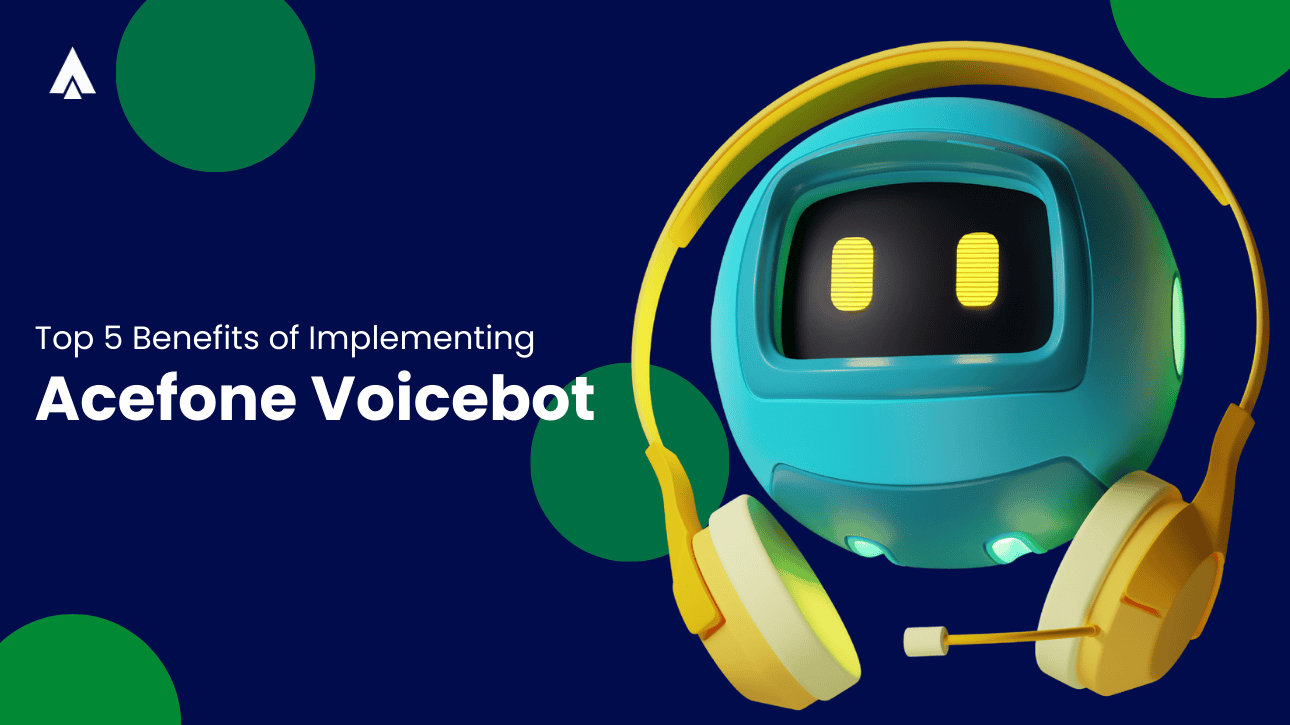We are living in an era of instant gratification. As consumers, we expect immediate resolutions to our problems, instant product deliveries, and the right support at the earliest.
Patience is clearly getting consigned to a lost virtue, and the paradigm has evolved into immediacy.
The good news is that businesses understood this trend in time and have kept pace with these changes in consumer behaviour.
From setting up contact centers, integrating technologies like a hosted auto dialer to streamline outbound workflows, to adopting newer voicebot-driven processes, consumer-focused companies have been ticking the right boxes
As we move forward, we see a plethora of technologies driving automation in the customer-facing touchpoints.
Some of these include chatbots for round-the-clock support, artificial intelligence coupled with machine learning for smoother communication and now voicebots for quicker and better customer support.
Voicebots are revolutionising the way businesses serve customers and their consumer experience (CX) delivery in general.
An almost human-like interaction using technology is the way to go, and most leading companies are already using it today in customer service.
The pertinent question to the ones lagging is—is your customer service ready for the voicebot era?
For the uninitiated, let us get to the basics first.
What is a voicebot
If you have ever used Alexa, Siri or Google voice assistants, you already have a sense of a machine understanding your voice commands and responding appropriately.
While these are classified as voice assistants and not voicebots in terms of applications, the reference will help you understand the concept better.
A voicebot is essentially software that is Artificial Intelligence (AI)-enabled and can interact with a customer through voice.
Augmented with technologies like Natural Language Processing (NLP), text-to-speech (T2S) and Machine Learning (ML), voicebots can understand voice queries, analyse, fetch and process relevant data while answering back to customers in real-time.
Programmed correctly, they can even communicate with customers to clarify queries or route them to a human agent for further support.
Read more here – Benefits of Acefone Voicebots
Trends in voicebot
The trends have been in the making for over two years now, and the adoption of voicebots in customer service is rising at an excellent scale. The reason behind this widespread implementation is the efficiency and effectiveness of voice AI.
Without going deep into details, let us quickly scan the top three trends:
- Voice AI continues to evolve in refinement and is becoming increasingly human
- Faster response times, superior customer satisfaction rates and reduction in operating costs is driving rapid adoption
- Devices and applications based on the Internet of Things (IoT) are significantly rising. Voice AI is already at the foundation of IoT
Voicebots in customer service
The value of voicebots in customer service is crystal clear. They have a significant impact on the CX capabilities of businesses through the following:
-
Refining your IVR menu and call routing
Customers can get their queries resolved faster through a simpler IVR menu, either through self-service or by reaching an appropriate human agent quickly.
-
Improving conversation quality
Voice is always faster and more satisfying for customers, thus positively impacting CX.
What’s more—a voice chat button can be made available to customers everywhere, from websites and apps to social media.
-
Providing unmatched scale
A single voicebot platform can interact with multiple customers, running into thousands even. Since they manage most repetitive tasks in an automated fashion, the scale becomes unmatched.
-
Reducing call times
Compared to humans, machines are faster in processing repetitive tasks like booking a complaint, checking status, etc.
Along with saving time for the customers, they also reduce costs to serve.
To top it all, voicebots offer customers a human-like experience with self-service options.
Instead of making customers scan through information, the bot is able to find the matching result from the data via keywords and communicate the relevant resolution. The overarching proposition here is humanising the customer support with a significantly lower number of humans.
With the growing trends towards humanising of support and a clear mandate for the relevance of AI-based voice in customer support, it is pertinent to evaluate and action the next steps.
Things to do next
Identify your target audience, define the role of a voicebot in your organisation, and implement it to perform as intended.
Let us review these in a bit of detail:
-
Evaluate your customer traits
To begin with, examine if your customers are ready for voice-based automated support. Depending on their profile, the nature of queries and the cost of resolving them, you can explore if deploying automated support is the suitable choice.
Remember, it is worth implementing voicebot solutions even if a fraction of your targeted customer base is ready and their queries are repetitive.
-
Structure your voicebot
This is one of the most essential tasks.
Once you understand the sections of engagement to automate, the next step is to narrow down the scope of potential queries and list down common relevant questions.
In parallel, list questions that your bot should ask to narrow down the query and get to resolution quickly. Do remember, customers can get frustrated with too many questions.
The key here is to remember that voice automation is being used to solve a problem and not just to present a technologically savvy set-up to your customers.
Therefore, it is always a good idea to mimic the engagements that a live agent would do in customer interactions.
-
Enable the voicebot
The voicebot resolves customer queries with the help of a knowledge base and existing data. This process needs attention as well.
While all this seems like a huge task, it is not. Experts are available to facilitate quick and easy implementations.
In fact, there are milestones to be achieved in the journey that will be of immense help in keeping you on track. Let us quickly review these.
The milestones
The review of successful implementations across industries throws up some common milestones to keep track of your progress. They are:
-
Measurable goals
A successful journey begins with documenting realistic and measurable goals. These goals must align with your overall business goals.
For instance, they could be CX metrics, self-service metrics, or even metrics on customer awareness as part of brand strategies.
-
Selection of the right platform
There are a plethora of options to choose from when it comes to AI-enabled voice platforms. And all of them come with strengths and weaknesses.
Therefore, it is pertinent to research this aspect well to finalise a platform that best suits your industry, customer profile, and business priorities.
-
Testing
Even well-designed voicebots may flounder with annoying mistakes. Also, AI supports their evolution.
Hence, it is essential to keep testing continuously to improve customer experience. The good news is that Bot KPIs help in constant testing and improving the functionality.
Final words
Voicebots are uniquely placed to remain mainstream in customer service and beyond. Businesses can ill afford to ignore them. And the benefits to CX and business profitability are clear.
Furthermore, one can begin with simple and repetitive customer queries and get a voicebot to resolve those. The bigger steps will come over time.














